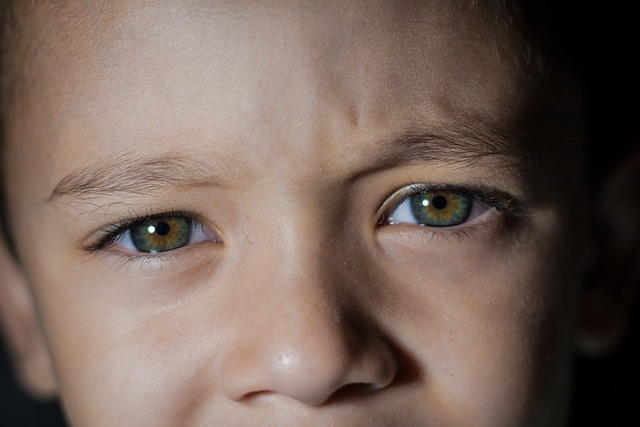In today's interconnected society, community collaboration is essential to protect our children. By joining forces, families, schools, organizations, and local authorities can create a robust network to implement child safety tips and prevent harm, including online safety measures and vigilance against abuse. Safety education empowers kids to recognize dangers and report issues while developing family safety plans. This collective action fosters safe environments where children thrive without fear, minimizing the risk of injury and ensuring their overall security. Key stakeholders collaborate at local and national levels to advocate for stronger child protection laws, fostering a culture of vigilance that prevents child abuse and promotes secure growth.
Fostering community collaboration is a powerful strategy to safeguard our youngest members. This comprehensive guide explores the multifaceted approach to enhancing child safety, from implementing effective protection strategies and educating families to understanding legal frameworks. By combining these elements, communities can create a robust safety net, empowering children and families with essential knowledge and resources to prevent and respond to potential harm, ensuring a secure environment for all. Discover practical tips on online safety, injury prevention, and the importance of family safety plans within your reach.
Understanding the Importance of Community Collaboration for Child Safety
In today’s interconnected world, fostering community collaboration is more crucial than ever for safeguarding our children. Child safety tips and prevention strategies extend beyond individual efforts; they thrive through collective action within communities. By joining forces, families, schools, organizations, and local authorities can create a robust network dedicated to protecting children from harm. This includes implementing online safety measures for kids, staying vigilant against child abuse, and ensuring compliance with child protection laws.
Community collaboration plays a pivotal role in promoting safety education for children, enabling them to recognize potential dangers and report issues. It also facilitates the development of family safety plans, empowering parents and caregivers to protect their loved ones effectively. Together, these collective efforts contribute to fostering safe environments where children can thrive, free from fear or insecurity, while minimizing the risk of child injury and ensuring their overall security.
Implementing Effective Child Protection Strategies: A Comprehensive Approach
Implementing effective child protection strategies requires a comprehensive approach that encompasses various aspects of community collaboration. It starts with educating families and caregivers about essential child safety tips, such as recognizing signs of potential abuse and understanding the importance of online safety for kids. By integrating child abuse prevention initiatives into everyday life, communities can foster safe environments where children thrive. Safety education for children should cover topics ranging from personal boundaries to reporting suspicious activities, empowering them to protect themselves.
Community organizations, schools, and law enforcement agencies play pivotal roles in this process. They can collaborate to develop and promote family safety plans, ensuring that parents and guardians are equipped with the knowledge and resources needed to safeguard their children. Strengthening child protection laws and policies at both local and national levels is also crucial, as it provides a legal framework for addressing child injuries and harm effectively. This collective effort not only prevents child abuse but also ensures that every child grows up in an environment free from fear and danger.
Educating Children and Families: Empowering Them to Stay Safe
Educating Children and Families about safety is a fundamental step in fostering community collaboration to safeguard our youngest members. By equipping kids with essential child safety tips, we empower them to recognize potential dangers and take proactive measures to protect themselves. This includes teaching online safety for kids, as digital spaces can also pose significant risks. Schools, community centers, and parents play crucial roles in imparting knowledge about preventing child abuse, understanding child protection laws, and creating a culture of vigilance.
Safety education goes beyond mere awareness; it involves preparing families to respond effectively in emergencies. Implementing family safety plans allows households to establish protocols for various scenarios, ensuring that everyone knows what to do if a child is ever at risk. This proactive approach not only prevents child injury but also fosters a sense of security within the community, as informed families become powerful allies in the ongoing effort to protect and serve our children.
Legal Frameworks and Resources for Preventing and Responding to Child Abuse
Child safety tips and the prevention of child abuse are paramount in fostering a culture of collaboration within communities. Many countries have robust legal frameworks in place to protect children from harm, including comprehensive child protection laws that outline responsibilities for caregivers, educators, and community members. These laws often mandate reporting suspected abuse, providing support services, and ensuring timely responses to ensure the well-being of children.
Online safety for kids is a significant concern, leading to increased efforts in educating children about potential risks and empowering them to make informed decisions. Safety education for children teaches them about personal boundaries, recognizing online threats, and reporting inappropriate behavior. Additionally, communities can develop family safety plans that include emergency contacts, meeting spots, and communication strategies to enhance the overall security of children. Such initiatives contribute to creating a network of support, fostering a sense of safety, and ultimately preventing child injuries and abuse.
Fostering community collaboration is a powerful strategy to safeguard our children. By integrating child safety tips into everyday life, educating both children and families on online safety and risk mitigation, and leveraging legal frameworks like child protection laws, we can create environments that protect against harm. Remember, preventing child abuse and ensuring security starts with each one of us—let’s work together to build a safer future for our kids.
